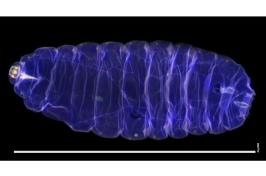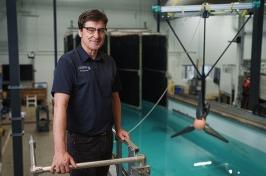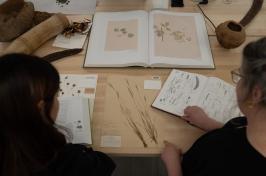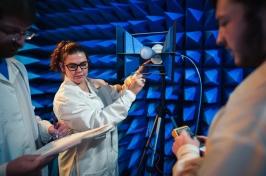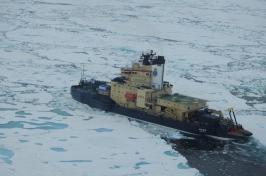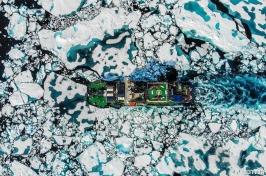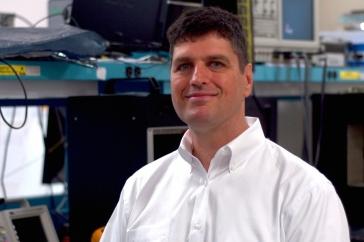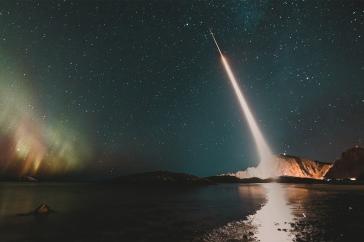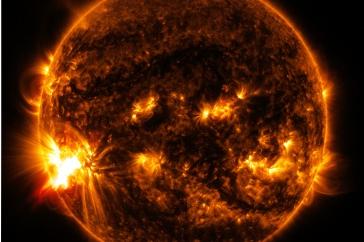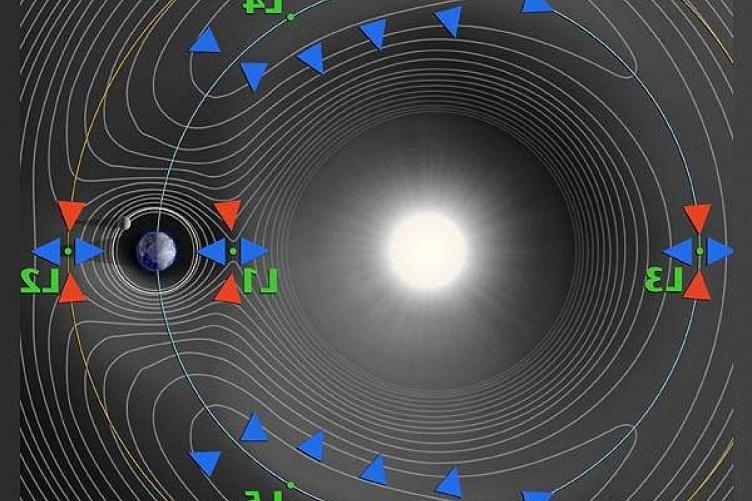
一颗新卫星将从太阳和地球之间的拉格朗日点1 (L1)监测太空天气. Image credit: NASA
美国国家航空航天局和美国国家海洋和大气管理局选择了一个由联合国大学研究人员组成的团队来设计和建造一个专门的磁力计,以提高基于卫星的空间天气监测和预报能力. 联合国大学将获得约600万美元用于即将到来的空间天气后续拉格朗日1号(SWFO-L1)任务.
A team of eight researchers and one student from the UNH Space Science Center and the Southwest Research Institute’s Earth, Oceans, and Space Office (SwRI-EOS)将创建一个磁力计,该磁力计将成为SWFO-L1卫星太阳风仪器套件的一部分, 它测量已经延伸到太空的太阳磁场,并最终与地球磁场相交,从而驱动磁暴.
“UNH has a very good legacy of magnetic sensor design, 这是建立在仪器电子部分的成功之上的 MMS mission,” explains Roy Torbert, 他是联合国大学的物理学教授,也是这次任务磁力计部分的首席PI. “With this magnetometer, 我们就能测量太阳风对地球磁场的影响.”
“对于UNH和SwRI-EOS来说,这是一个巨大的胜利,NOAA选择并委托我们作为这一关键测量的合作伙伴."
长期以来,科学家们一直试图更好地理解和预测来自太阳风的太空天气风暴, 哪些会对太空中的宇航员的健康构成威胁,并可能影响电网, satellite communications, and GPS navigation on Earth. NOAA and other organizations have monitored space weather via satellites for years; the suite of instruments on SWFO-L1, including UNH’s magnetometer, 在提供测量太阳风的新方法的同时,是否会改进目前在其他卫星上使用的一些老化技术. Ultimately, 科学家们希望这将有助于他们预测可能影响地球生命的太阳风暴.
The SWFO-L1 satellite will orbit the sun approximately 1.距离地球500万公里,科学家称之为拉格朗日点1 (L1), which will allow for an unobstructed view of the sun’s corona, the source of the solar wind, for improved data collection. 位于L1的航天器还可以在到达地球前大约一小时直接测量太阳风等离子体和行星际磁场, explains Harlan Spence, director for the UNH Institute for the Study of Earth, Oceans, and Space.
“这种提前预警对于受地球空间风暴影响的所有行业都很重要,并有助于推动预测模型, 比如我们正在与约翰霍普金斯大学应用物理实验室合作开发的一个,作为NASA DRIVE项目的一部分,” he says. “对于UNH和SwRI-EOS来说,这是一个巨大的胜利,NOAA选择并委托我们作为这一关键测量的合作伙伴.”
The SWFO-L1 mission is scheduled to launch in 2024 along with NASA’s IMAP mission, which UNH scientists are also involved in.
The Institute for the Study of Earth, Oceans, and Space (EOS) is UNH’s largest research enterprise, comprising six centers with a focus on interdisciplinary, high-impact research on Earth and climate systems, space science, the marine environment, seafloor mapping, and environmental acoustics. With more than $43 million in external funding secured annually, EOS营造了一个知识和科学的环境,在世界一流的研究和研究生教育中推进了有远见的奖学金和领导力
-
Written By:
Rebecca Irelan | Institute for the Study of Earth, Oceans, and Space | rebecca.irelan@femdomcenter.com | 603-862-0990




















